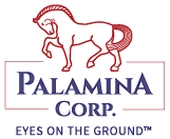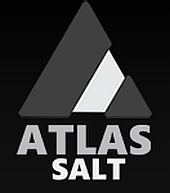 Cruz Looking to Start Operations on War Eagle Cobalt Prospect in British Columbia
Cruz Looking to Start Operations on War Eagle Cobalt Prospect in British Columbia
Dispute at Congo Cobalt Mine Heads to Court, Halts Supply (full article below). Cobalt is one of the tightest supplies within the exploding battery metals group; therefore any disruption in the cobalt supply can have a significant impact on cobalt prices. Cobalt is once again at fresh new Nine year highs. Cruz has 9 cobalt projects in North America and is fully funded to carry out all planned operations.
Cobalt Prices have just broken out to BRAND NEW Nine year highs. Cobalt demand has never been higher. Cruz has multiple cobalt projects and is one of the largest landholders in Ontario. First Cobalt (FCC) has just recently been consolidating the Ontario Cobalt Camp. Cruz is active on multiple cobalt projects in North America.
.png?g=1511882610739)
VW Hunts for Critical Element Needed in Electric Cars (full article below). VW is trying source cobalt as the cobalt prices break out to 9 year highs as global demand on cobalt explodes.
LME probes cobalt supplies after complaints over child labour links. Exchange accused of allowing Chinese group to trade untraceable metal in London(full article below)……
If supplies of cobalt from the the Congo are taken out of the market, this could cause a significant supply crunch of which is even greater than is currently occurring due to the electric car explosion. Cruz has only projects in ethically mined regions. We are active on multiple cobalt projects in North America and have more than enough cash on hand to undertake these operations.
Electric Car Sales Jumped 63 Percent in the Third Quarter, Mostly Because of China (Full article below)
Volkswagen accelerates push into electric cars with $40 billion spending plan (full release below)
Telsa unveiled their new electric truck and new car.(full article below). These new vehicles will only add to the demand on battery components… Cruz is active on multiple cobalt projects currently.
A very informative video on cobalt can be seen here.
http://www.investmentpitch.com
Very informative chart to show the demand coming for Cobalt and Lithium

ABOUT CRUZ:
Thank you for your interest in Cruz Cobalt Corp. As you can see there are many compelling reasons to look at Cruz Cobalt Corp immediately. Cruz has recently hired experienced geologists to begin operations on our Ontario, Idaho, and Montana projects. Cruz has recently completed an airborne survey over our four Ontario cobalt prospects and we look forward to uncovering some additional data that may provide new cobalt targets as well as tightening up our current areas of focus. Also, Cruz has mobilized crews and commenced a work program on Cruz’s 100-per-cent-owned Idaho Star cobalt prospect in Idaho, and Cruz’s 100-per-cent-owned Chicken Hawk Cobalt Prospect in Montana, USA.
According to President James Nelson, “Cruz employed early mover advantage as Cruz has been able to acquire, what we feel is one of the best collections of high grade cobalt prospects in North America before the majority of the recent cobalt entrants were in the space. Cruz currently has Seven cobalt projects located in Canada, one in Idaho and one in Montana. Cruz’s 4 separate Ontario cobalt prospects are all located in the vicinity of the city of Cobalt. According to government mineral files, the 1,265 acre Coleman Cobalt Prospect returned cobalt grades of 13%, the 900 acre Johnson Cobalt Prospect returned grades of 10.5% cobalt, and the 1,580 acre Bucke Cobalt Prospect returned cobalt grades of 13%. The 4,980 acre Hector Cobalt Prospect covers multiple cobalt occurrences. Our 4,935 acre War Eagle Cobalt Prospect in British Columbia covers a past producing mine as well and returned assays of 6.5% cobalt. Cruz’s USA projects include the 1,940 acre Chicken Hawk prospect in Montana and the 880 acre Idaho Star prospect. Based on these projects, management feels that Cruz has amassed a quality portfolio of cobalt assets that have some of the highest historic cobalt grades in North America, which sets Cruz apart from most cobalt companies in the junior space.”
Cruz is now trading approximately 30% below our recent year highs.
“We feel that 2017 will be a break out year for cobalt prices and Cruz is well positioned to take full advantage of this. Cruz has the money already raised to commence full operations on these projects with our goal to make Cruz the ‘go-to’ North American Cobalt project generator and developer. The second half of 2017 will be an extremely active period for Cruz and management is optimistic about what will be discovered by Cruz on our cobalt properties.” states President Nelson.
Cruz has had one property transaction to date in line with the project generator and developer model. That Idaho Cobalt Property was vended to US Cobalt Inc (USCO–TSX.v, SCTFF–USA) formerly named Scientific Metals Corp (STM–TSX.v, SCTFF–USA) in late 2016.
Cruz is fully cashed up and is operational in both countries.
Cobalt prices have increased significantly over the past 12 months and have recently broken out to new 9-year highs of over $28 per pound. We feel that cobalt prices could have the same type of parabolic move like lithium has had. Similar dynamics that have driven lithium prices higher are present in cobalt, and that is why Cruz established itself at the early stages of this sector move by securing multiple high grade cobalt project.


Lithium Price Chart. We feel that Cobalt will have a similar move as Lithium has experienced

Dispute at Congo Cobalt Mine Heads to Court, Halts Supply
State miner Gecamines facing legal action by two parties
Gecamines partner GTL accounts for 4% of global cobalt supply
An attempt by Congo’s Gecamines to profit from the boom in battery metals has backfired, leaving the state-owned miner facing two international court actions and halting cobalt production at a key mine.
Gecamines blocked its 16-year partner GTL’s access to the cobalt site in the southeastern Congolese town of Lubumbashi in March to make way for a new investor, as prices for the metal soared. The attempt to switch one partner for the other has resulted in both parties taking legal action against the state-owned company for breach of contract.
Jersey-registered GTL, a joint venture in which closely held Groupe Forrest International has a 70 percent stake and Gecamines holds 30 percent, is suing Gecamines in the commercial court in Brussels for damages, according to two people familiar with the matter. The court schedule means no more cobalt is likely to be produced at the site until at least 2020 if there isn’t a settlement, said the people, who asked not to be identified because they’re not authorized to speak publicly about the matter. The court declined to comment.
Separately, British Virgin Islands-registered Shamrock Global Inc. says it petitioned the International Court of Arbitration in Paris on Nov. 2 to rule whether Gecamines breached a July 2016 agreement to grant Shamrock access to the same site after GTL’s contract ended, Chief Executive Officer James McCormack said in a statement emailed Nov. 22.
Global Supply
Congo supplies about two-thirds of the world’s cobalt, of which as much as 5,000 metric tons a year, or 4 percent of global supply, was produced by GTL. Traditionally used to harden steel, cobalt’s ability to conduct electricity has made it an essential part of the rechargeable batteries needed to power electric vehicles. The price of the metal has risen 86 percent this year to $61,000 a metric ton on the London Metal Exchange.
Glencore Plc, the world’s largest cobalt miner, has bought GTL’s output since 2015.
GTL has processed mine waste, known as slag or tailings, at the Lubumbashi site since 2001. The project was a lucrative source of revenue for Gecamines. The state miner received as much as $65 million a year in payments for the raw material, in addition to its 30 percent share of total profit, GTL’s majority shareholder, Groupe Forrest International, said in April.
Still, Gecamines blocked GTL’s access to the site on March 23, forcing the company to switch off the furnace five months later. Between March and July, GTL twice failed to obtain a temporary decision from the Belgian courts to restore access to the mine waste and save its supply of raw material for the furnace.
Differing Interpretations
Groupe Forrest spokesman Henry de Harenne confirmed the case is ongoing, but declined to comment on the details of the dispute. Gecamines said in an emailed response to questions that the dispute with GTL centers around “the interpretation and execution of contractual agreements concluded in 1997,” noting that Belgian courts have already “ruled in favor of Gecamines” twice this year.
GTL contests Shamrock’s claim to the tailings and says its contract grants it preemption rights to the parts of the site it wasn’t exploiting. Shamrock’s own arbitration further complicates the prospects of future production at the site.
A ruling in Shamrock’s favor by the Paris arbitration court will “have the effect of ordering Gecamines to cease and desist from the conclusion of any and all contract negotiations and or settlement agreements with any third parties in respect to the Lubumbashi slag dump, pending the outcome of the main arbitration hearing between Shamrock and Gecamines,” McCormack said.
The court heard the case on Nov. 24 and will decide whether to issue an emergency arbitration order on Monday, he said. Shamrock will continue with the main arbitration hearing if the emergency order isn’t granted, McCormack said.
Contract Interpretations
“Gecamines considers that the agreements concluded between Gecamines and Shamrock have not entered into force” because “preceding conditions” are yet to be satisfied, the state-owned miner said.
Under a 1997 contract, GTL had the right to produce as much as 5,000 tons of cobalt annually from the tailings site for about 15 years. That agreement was revised in January 2013 and Groupe Forrest has said its interpretation of the amendment gives GTL the right to continue to process cobalt at the same rate until the resource is fully depleted.
In October 2016, independent assessments by Gecamines and GTL agreed that about 1.47 million tons of ore remained in the dump. That’s equivalent to a further five years of operations, Groupe Forrest said in April.
Despite the amendment, in December Gecamines said GTL had exceeded the quota permitted by the original contract and it reserved the right to annul the agreement, according to copies of correspondence provided by Groupe Forrest in April. Gecamines said in August that the amended contract abolished a 20-year fixed term contained in the original accord “while maintaining the maximum quantity of 75,000 tons of cobalt.”
Gecamines said its “external studies” showed GTL had surpassed its allowance and the state miner had “consequently ceased to deliver slag, in accordance with the terms of the contract.”
GTL has produced less than 65,000 tons and there is no production limit under the revised contract, Groupe Forrest said in April.
VW Hunts for Critical Element Needed in Electric Cars
Volkswagen AG is stepping up its hunt for long-term supplies of battery metals it will need to help power electric cars across its entire range.
The top automaker invited producers and traders of cobalt, one of this year’s best-performing metals, for talks at its German headquarters this week, people familiar with the matter said. Buying the critical battery component might not be as simple as first thought — after issuing a tender in September, the firm has since relaxed demands for offers at a discounted fixed price, said the people, who asked not to be identified because the talks are private.

Volkswagen is in “intensive talks” with producers of materials for electric cars, the company said in an email, adding that the discussions also deal with transparency, compliance and sustainability in the commodities supply chain.
Traditionally used to harden steel, cobalt’s ability to conduct electricity has made it an essential part of rechargeable batteries. That has left users scrambling to secure supplies, most of which come from the Democratic Republic of Congo. Securing long-term purchases will be crucial for Volkswagen because it plans to spend more than 34 billion euros ($40 billion) in the next five years as part of a push into battery-powered vehicles and autonomous-driving systems.
The electric car boom could see cobalt demand jump as much as 47-fold by 2030, according to Bloomberg New Energy Finance. The metal is up 86 percent this year at $61,000 a metric ton on the London Metal Exchange.
Higher Price
High prices and supply constraints are prompting some automakers to invest in new battery technologies less reliant on cobalt. Still, cobalt is likely to trade above its 2008 peak of $107,000 for a “sustained period” as miners seek new sources of supply, Sanford C Bernstein & Co Ltd. said in a September report.
The world’s biggest miners of the metal include Glencore Plc, Eurasian Natural Resources Corp. and China Molybdenum Co. Last year, Glencore shipped 24,500 tons from its Mutanda mine in Congo, or almost a quarter of global production. Nickel mines, such as those run by Sherritt International Corp. in Madagascar and Vale SA in New Caledonia, also produce cobalt, but in much lower volumes than Congo’s copper projects.
The African country accounts for about two-thirds of global output. While most of that is from mines run by Glencore and China Molybdenum, about 10 to 20 percent comes from informal digging that groups like Amnesty International allegemay use child labor. The dependence on Congo and risk that metal mined in dangerous conditions may enter the global supply chain raises the need for users to secure reliable, transparent supplies.
LME probes cobalt supplies after complaints over child labour links
https://www.ft.com/content/
Exchange accused of allowing Chinese group to trade untraceable metal in London
One of the City of London’s oldest institutions has launched an investigation into whether cobalt mined by child labour is trading on its exchange, following complaints it is allowing a Chinese company to sell untraceable supplies of the metal widely used in mobile phones and electric vehicles.
Members of the 140-year-old London Metal Exchange initially raised concerns about questionable cobalt this summer, highlighting their fears the rechargeable battery material may have come from mines in the Democratic Republic of Congo accused of employing children.
Earlier this month, the LME quietly sent a directive to all suppliers asking them to detail how they guarantee “responsible sourcing” of commodities traded on the exchange. The notice, contained in email seen by the Financial Times, requests a response by December 1.
The LME is the world’s most important venue for industrial metals and helps set prices for copper, tin and other metals. If tainted cobalt is found in its network of warehouses it could trigger a backlash from users of the exchange.
Groups such as Amnesty International say children as young as seven are mining cobalt by hand in the DRC, one of the world’s poorest countries. The allegations have put pressure on companies such as Tesla and Apple to ensure cobalt in their battery-run products is traceable to reputable mines.
More than half the world’s cobalt comes from the DRC, where up to one-fifth is extracted by so-called artisanal miners, who dig by hand in deep tunnels. Artisanal mines are more likely to employ child labour, according to Amnesty.
Cobalt prices have risen by more than 80 per cent this year as carmakers step up electric vehicle production. Material mined in the DRC is largely sent to China for processing.
The LME notice, sent 12 days ago, said its inquiry was part of a broader push to address responsible sourcing and was “not related to any particular producer or brand”. Two traders said, however, the request came only after they had made complaints to the LME about the traceability of specific cobalt supplies.
“We would expect that any specific concerns will be addressed as part of our existing efforts and we look forward to engaging with the market further on this important topic,” the LME email said.
The two traders said concerns arose this summer when metal produced by Yantai Cash Industrial, a Shandong-based producer, appeared on the exchange. They said many market participants believe Yantai Cash sources some of its unrefined cobalt from artisanal DRC mines that carry a higher risk of using child labour.
Concern they might receive Yantai Cash metal has recently caused cobalt on the LME to price at a discount to other sources, traders said. While LME metal must meet certain quality standards, buyers cannot choose the source of the material, which is delivered from the exchange’s own warehouses.
Yantai Cash executives said they have begun an inquiry into the concerns.
“Some of our customers have asked us to do due diligence investigation on the supply chain to see if [the chain] has child labour or human rights problems,” said Yantai Cash’s deputy head of international trade. “We have started doing that.”
The LME has broad regulatory control over metal on the exchange, but has no specific rule governing sourcing. Some of the world’s biggest miners including Glencore and China Molybdenum also operate in the DRC using large-scale machinery.
“We have strict guidelines and criteria for brands wishing to list their products on the LME,” the exchange said. “Any evidence of sub-standard practices that fall short of our requirements would be investigated by the LME and action would be taken.
Electric Car Sales Jumped 63 Percent in the Third Quarter, Mostly Because of China
Global sales of electric cars increased 63 percent in the third quarter of this year from the same period a year ago, and 23 percent from the second quarter of 2017, according to a report by Bloomberg New Energy Finance. The Bloomberg research arm now expects that a million electric cars will be sold by the end of the year. Those numbers don’t tell the whole story, however.
The sales total of 287,000 units includes both all-electric cars and plug-in hybrids. While combining the two categories is a common practice in studies of vehicle sales, and government policies often treat them the same, large numbers of plug-in hybrid sales can have a significant impact on overall emissions savings.
Plug-in hybrids give people the option to drive on gasoline, rather than electric power. On paper, they are more efficient than conventional hybrids or straight gasoline and diesel cars, but in the real world, it all depends on how much mileage drivers cover under electric power. Plug-in hybrids are only effective if you plug them in.
China also accounted for more than half of global electric car sales. While China is the world’s largest car market, the demand for electric cars and plug-in hybrids was likely due as much to government incentives as inherent consumer interest. China heavily incentivizes electric cars and some cities give them priority in lotteries for new-vehicle licenses.
“The Chinese government is very focused on pushing up EV sales,” said Aleksandra O’Donovan, one of the authors of the Bloomberg New Energy Finance report. “One reason for that is the local pollution levels in the cities, and a second is for China to build domestic heroes to compete internationally in this market.”
It’s likely that electric cars haven’t reached the point where sales can sustain themselves without strong government incentives. But, then again, they may never have to reach that point.
China will introduce quotas in 2019 that require automakers to sell large numbers of electric cars and plug-in hybrids, and several European countries are considering outright bans on sales of new gasoline and diesel cars. One major outlier is the United States, where the Trump Administration and a Republican Congress have shown a decided lack of enthusiasm for electric cars.
Volkswagen accelerates push into electric cars with $40 billion spending plan
WOLFSBURG/HAMBURG (Reuters) – Volkswagen ( VOWG_p.DE ) approved a 34 billion euro ($40 bln) spending plan on Friday that accelerates its efforts to become a global leader in electric cars.
The world’s largest carmaker by unit sales will spend the money on electric cars, autonomous driving and new mobility services by the end of 2022, it said after a meeting of its supervisory board.
“With the planning round now approved, we are laying the foundation for making Volkswagen the world’s No. 1 player in electric mobility by 2025,” Chief Executive Matthias Mueller told a press conference.
The carmaker’s projected spending is significantly bigger than its pledge two months ago that it would invest more than 20 billion euros on electric and self-driving cars through 2030.
Electric and autonomous vehicles are widely seen as the keystones of future transport, but pioneers such as Tesla Inc and other manufacturers are still working out how to make money on them as poor charging infrastructure, high battery costs and electric vehicles’ still limited driving range weigh on customer demand.
Until it admitted two years ago to cheating on U.S. diesel emissions tests, Volkswagen had been slow to embrace electric cars and self-driving technology.
But the emissions fraud, and new Chinese quotas for electric cars, prompted a strategic shift to zero-emission and self-driving technology, and Volkswagen now has one of the most ambitious targets in the industry. It has pledged to offer an electric version of each of its 300 group models by 2030.
The group said its total investments in electric vehicles capacity and projects will amount to about 72 billion euros by 2022, confirming an earlier Reuters story.
To fund greater spending on electric vehicles, it will draw on cost savings in all areas of operations, including vehicle development, administration and manufacturing, as well as strong cash reserves.
Its net liquidity still stood at around 24 billion euros after nine months even though about 17 billion euros of funds have been paid out to cover costs for its dieselgate scandal. VW’s core autos division has made cost savings of about 1.9 billion euros since the start of this year, nearly meeting budgeted cost cuts for the full year.
Mueller said VW will maintain spending discipline in order to shoulder the increased investments in new technologies while it grapples with billions of dollars of costs for its emissions scandal.
COST CONTROL
The carmaker aims to cut overall spending on factories, equipment and technology to 6 percent of automotive sales by 2020 from 6.9 percent last year, counting on growing revenue and deliveries in coming years.
Wolfsburg-based VW wants to increase the share of electrified vehicles to 3 million cars, or a quarter of group deliveries, by 2025. The forecast assumes that group auto sales will keep growing to reach about 12 million a year by the middle of next decade from 10.3 million last year.
“Investors should welcome a commitment towards more contemporary investment discipline,” said Evercore ISI analyst Arndt Ellinghorst who has an “outperform” rating on VW shares.
“So far this year, VW has made good progress, lowering both capex and cash R&D costs.”
Works council chief Bernd Osterloh said spending targets approved on Friday would strengthen VW’s 10 German factories, noting that 3 billion euros alone will be invested at the base plant in Wolfsburg, including to prepare for the launch of the next-generation Golf hatchback.
Investments of more than 1 billion euros will be assigned to a plant in Zwickau, eastern Germany to ramp up electric-car production at the site, which in future will only make zero-emission vehicles, VW said.
Output of the combustion-engine Golf hatchback as well as the Golf and Passat station wagons will be shifted from Zwickau to the underutilized factories at Wolfsburg and Emden, VW said, confirming a Reuters story.
“It was long and hard bargaining to safeguard the interests of the employees but I think we can live well with the compromise,” Osterloh said.($1 = 0.8481 euros)
According to this article…..http://www.bbc.
Tesla has unveiled its first electric articulated lorry, designed to challenge diesel trucks as king of the road.
The long-anticipated Tesla Semi has a range of 500 miles on a single charge.
Tesla says the vehicle – known in the US as a semi-trailer truck – will go into production in 2019.
Chief executive Elon Musk also unexpectedly revealed a new Roadster, which he said would be “the fastest production car ever” made.
The red sports car was driven out of the trailer of the electric lorry during Tesla’s presentation on Thursday.
The Roadster will have a range of close to 1,000km (620 miles) on a single charge and will do 0-100mph in 4.2 seconds.
Mr Musk described it as “a hardcore smackdown to gasoline cars”.
He said riding in traditional cars would be like driving “a steam engine with a side of quiche”. The new Roadster becomes available in 2020.
 Image copyright TESLA
Image copyright TESLAThe Tesla Semi will achieve 0-60mph in 20 seconds when pulling 36,287kgs (80,000lbs), the maximum allowed on US roads.
Speaking on stage at Tesla’s facility in Los Angeles, chief executive Elon Musk said: “It’s not like any truck that you’ve ever driven.”
However, the charismatic Mr Musk faces continued pressure from investors and customers as the firm struggles to meet demand for its Model 3 car.
Model 3 delays
The Model 3 is behind schedule due to factory delays, a situation Mr Musk described recently as “production hell”.
The 46-year-old had been camping at Tesla’s Gigafactory in Reno, Nevada, to oversee battery production for the new cars. However, while the company had predicted it would make 1,500 Model 3 cars in the third quarter of 2017, in reality it only managed 260.
 Image copyright TESLA
Image copyright TESLADepending on your opinion of Mr Musk, launching a new truck at this time is either a bold statement of belief in his technology, and business as usual, or a foolish distraction from Tesla’s main goal of making its Model 3 a mainstream, affordable car.
There are elements of the Model 3 in the Tesla Semi. Each of its wheels is powered by a Model 3 motor, and the cab features two of the touch screens displays found in the Model 3.
Competitive market
With Tesla Semi, Mr Musk enters a competitive, demanding market. There are an estimated 3.5 million truck drivers in the US, the vast majority of whom drive diesel-powered engines. Tesla will not be able to compete on diesel’s range, and battery specialists doubt Tesla can produce a powerful enough battery at a reasonable price.
“A 300-mile-capable battery pack costs about $200,000,” a Carnegie Mellon study concluded.
“Which is much higher than a diesel-powered semi-truck, which costs about $120,000, on average, for the entire vehicle.”
 Image copyright TESLA
Image copyright TESLAMr Musk said the Tesla Semi would be able to travel 643km (400 miles) after 30 minutes of charge at one of Tesla’s new mega-chargers.
The cost?
As for cost, the company said that per mile the Tesla Semi would work out cheaper than a diesel equivalent when fuel and other maintenance is taken into consideration – but did not share the cost of an individual truck.
The Diesel Technology Forum, a non-profit trade group that promotes the use of diesel, said Tesla’s announcement needed to be “evaluated in the context of reality”.
“Diesel is the most energy efficient internal combustion engine,” Allen Schaeffer, the forum’s executive director.
“It has achieved dominance as the technology of choice in the trucking industry over many decades and challenges from many other fuel types.
“Still, today, diesel offers a unique combination of unmatched features: proven fuel efficiency, economical operation, power, reliability, durability, availability, easy access to fuelling and service facilities, and now near-zero emissions performance.”
As well as coming up against diesel incumbents, Tesla also faces other electric rivals. Concept electric big rigs have been unveiled by Daimler, Volkswagen and Cummins – though all fall short on range, and none are currently on the roads.
Where Tesla believes it can bring an added advantage is with on-board safety and comfort.
A statement from Tesla boasted that “jackknifing is prevented due to the Semi’s onboard sensors that detect instability and react with positive or negative torque to each wheel while independently actuating all brakes”.
“The surround cameras aid object detection and minimise blind spots, automatically alerting the driver to safety hazards and obstacles.
“With Enhanced Autopilot, the Tesla Semi features Automatic Emergency Braking, Automatic Lane Keeping and Lane Departure Warning.”
Autopilot is Tesla’s autonomous driving function that offers several self-driving features, most importantly guiding the vehicle to stay within the lines on the road, and slowing down in keeping with traffic up ahead.
































